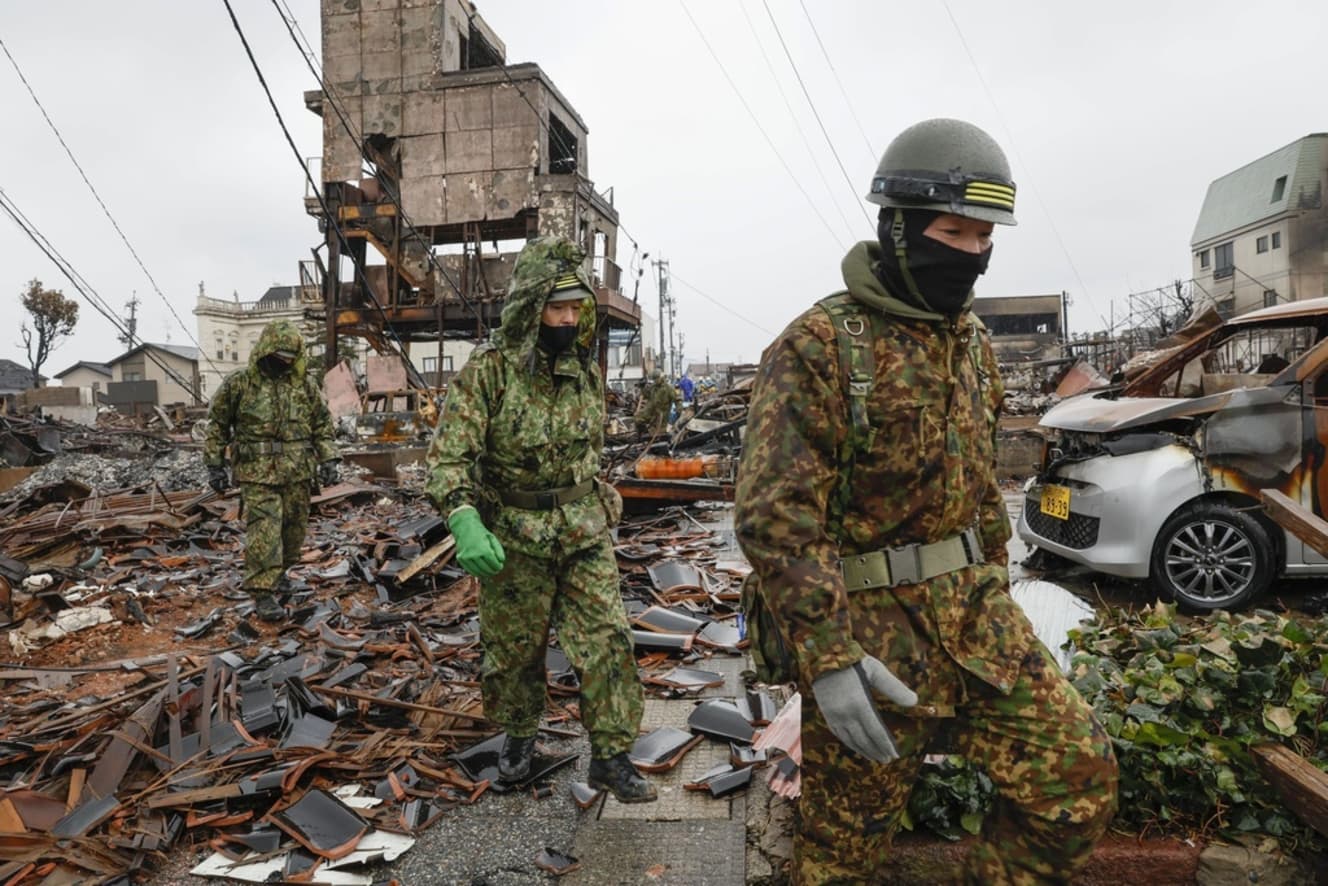A former Ground Self-Defense Force official reveals the tactics of “fake JSDF officers” and how to tell the real ones from the fake ones.

It has been a month since the Noto Peninsula earthquake hit Japan. However, one man who had experienced the disaster in eastern Japan and delivered relief supplies to Ishikawa revealed, “I was prepared to do anything I could do to help, but I was not.
One man who had experienced the devastation of the Great East Japan Earthquake and delivered relief supplies to Ishikawa said, “I had prepared to help in any way I could, but I could not enter Wajima City or Suzu City in the north of Wajima City as an ordinary volunteer yet. Most of the people doing relief work there are police, firefighters, Self-Defense Forces personnel, and government officials. They are staying in Kanazawa City. However, due to the blocked roads caused by the earthquake, routes to the area are extremely limited, and it takes two to three hours from Kanazawa City to Wajima by car. That is why people from outside the city have not yet been able to enter the area as volunteers.
The man continued.
Many of the houses at the site had tiled roofs, and we saw houses that had been crushed by the weight of the roofs. In that case, people would have evacuated with their household goods left behind, but some of them were still clean, so, to put it another way, they could have tried to steal them if they wanted to.
If police, firefighters, or Self-Defense Forces personnel are on the scene, the possibility of theft or other “mischief” seems slim, but in fact, this can be a trap, he says. Mr. Shigenori Terui, a former Ground Self-Defense Force (GSDF) officer who was involved in rescue activities as a GSDF member at the time of the Great East Japan Earthquake, reveals, “From the point of view of the people affected by the disaster, it is difficult to understand the situation.
For those who are suffering from the disaster, their belief in uniforms is even stronger than usual, so they think that they will be able to help them immediately. Those who try to misbehave will take advantage of this mentality. It is dangerous when there are many “uniformed” people.
For example, nowadays, it is easy to obtain rain coats and helmets worn by the Self-Defense Forces personnel as protection from the rain on the Internet, so it is difficult to tell the difference if someone tries to “misbehave. Such people would approach victims who came to check on their homes and sell them blue sheets that were priced at 30,000 yen, saying, “Now you can buy them for 60,000 yen,” or start talking about insurance.
In fact, at the time of the Great East Japan Earthquake, I was on the scene six hours after the disaster occurred, and on the following day, I heard about people who were “misbehaving. I saw a man dressed like a member of the Self-Defense Forces using a manual pump to drain kerosene from an outdoor kerosene tank that had been swept away by the tsunami. They were selling the kerosene to the public. The reason I knew it was a “fake JSDF officer” is because the car he was driving was a Suzuki Jimny. The JSDF used to move around in long, narrow, sail-hauled or armored vehicles with their own license plate numbers, so I knew it was him.

Other examples included going to hotels that had been damaged by the disaster, extracting sake from the cellars where it was stored, and selling it on the Internet. Among them were famous sake and wine from a sake brewery that had been in business since the Meiji era (1868-1912), but because the brewery had been damaged by the earthquake, they found out that the stolen items were being sold.
In the case of the SDF, we work in a set area. Conversely, we do not set foot outside of the assigned area. Even if they find something strange outside the area, they are so busy with the work at hand that they don’t have time to go to the site and question the suspicious person. So, even if we found someone who was suspected of doing something wrong, we could not crack down on them.
So how do you tell the difference between a “fake JSDF officer” and a real one? Mr. Terui continued.
There are two ways. If you go to a damaged house and are approached by a person who looks like a JSDF officer, take a picture with him. If they do not agree to have their picture taken, the second thing you can do is ask for the contact information for the liaison officer’s contact phone number.
The reason I ask for the contact information of the liaison officer is that there is a point of contact at the troop headquarters that communicates with the outside world, and this is also the point of contact to ask for help, ‘I need you to come and help me. There is no way that the personnel on site are unaware of this. If they don’t know about it, they are what we call ‘thieves.
Survivors may be in the mindset of “I don’t want to be suspicious of people who are in the position to help me. However, the earthquake has cut off roads and bridges, and although Self-Defense Forces vehicles, which can drive over rough terrain, can move around, passenger vehicles such as police patrol cars cannot come and go as they please, resulting in a near lawless situation. We must not forget that “fake SDF officers” dressed in SDF uniforms are taking advantage of the victims’ desire to be helped.
PHOTO: Courtesy of Kyodo News (1st photo), courtesy of RACIS (2nd photo)